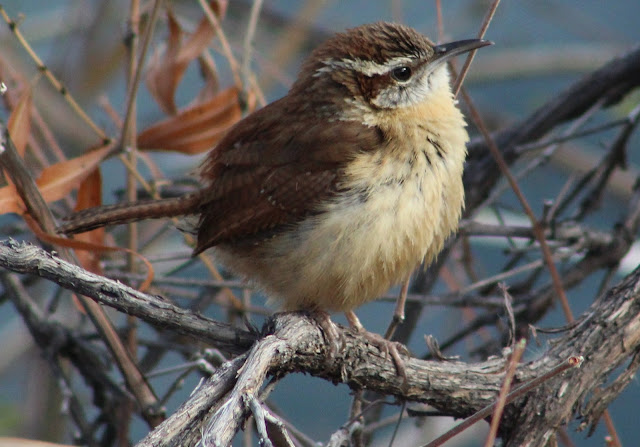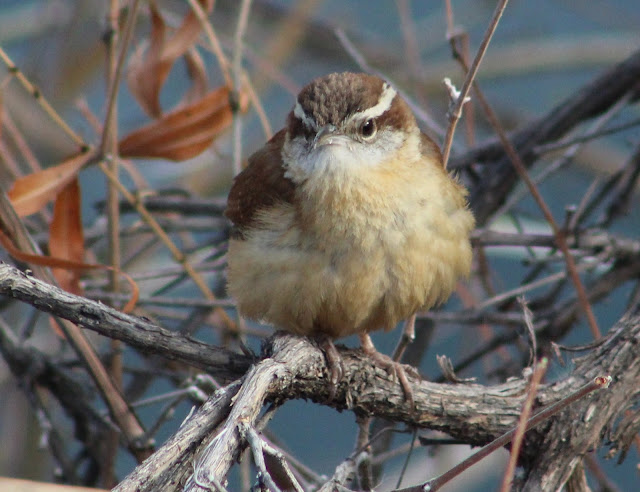Mark and Ellen Brogie are a snowbird couple from Nebraska who have spent the last few months here in Arizona. They are well known birders in Nebraska. Mark is Nebraska's top lister and has achieved many great things in Nebraska birding. Caleb and I were excited to show Mark and Ellen some new birds for their life list, some that they wouldn't ever see in Nebraska. And if you have read my blog, you all know who Caleb "The Boy" Strand is, he's pretty cool too ;)
The four of us met up very early and left the Phoenix area at 5 A.M. for the bird pursuit. Our first stop of the day was at the birder tromped Florida Canyon. Thousands of birders make the climb up this canyon annually to see the coveted Rufous-capped Warbler. Besides the warbler itself, the flowing stream through Florida Canyon brings a worthwhile experience. Florida is a narrow canyon and is surrounded by desert and shrubby vegetation. Groves of riparian trees and Madrean oak fill the canyon in places. Mark, Ellen, Caleb, and I found ourselves walking up and down the canyon for over an hour without much in the way of bird life to start the day. Once the sun really hit the canyon, more and more birds would become active. It took awhile, but after some time, the energetic sounding song of the Rufous-capped Warbler echoed across a side of the canyon. The four of us pursued the warbler through thick and thin. Most of it was thick. We listened to the warbler for a long time while trying to get visuals. Listening to it was even fun. After a lot of work and pursuit, the Rufous-capped Warbler eventually sat at eye level and close to Mark, Ellen, and I, giving us great views. Caleb watched it and listened to it as he scoured a cliff above the location. It was great to catch up with this bird again, and seeing Mark and Ellen get a lifer the way they did was even better. After a lot of climbing and bushwhacking only to see the warbler vanish the first few times as we tried to lay eyes on it, resulted in an ending that rewarded us for our efforts.
 |
| Rufous-capped Warbler in Florida Canyon. Pima County, Arizona. 3/9/2018 |
 |
| This Rufous-capped Warbler sang constantly for us once it started singing. Listening to it before we could finally see it was fun too. |
 |
| Caleb Strand navigating the steep terrain. |
 |
| Ellen and Mark Brogie enjoying the Rufous-capped Warbler! |
After Florida Canyon, we went to Proctor Road near the entrance to Madera Canyon. Our main target here was Black-capped Gnatcatcher. It didn't take us long to find a pair of the Gnatcatchers and note their key vocalizations and field marks. They were moving fast, and it was difficult to photograph them.
It was awesome that we got Rufous-capped Warbler and Black-capped Gnatcatcher as quickly as we did. It meant that we could move on to other locations and try for more southeastern Arizona rarities. The next bird that we opted for was a Sinaloa Wren. This Sinaloa Wren was found adjacent to the Santa Cruz River along the De Anza Trail stretch just south of Santa Gertrudis Lane. If we could find it, this would be a third lifer of the day for the Brogies. Caleb and I had both seen Sinaloa Wren, but only once. My previous observation, which took place in 2013, contained good audio experience but a horrible view. Birders have been seeing this wren near a toy children's bicycle left out on the trail. It took us a few minutes, but we found the bicycle, and ironically, the wren perched right above the bicycle as we were walking up! The wren quickly went into denser cover. We would see it on and off after twenty minutes or so of watching. During that time, I had a few great views of this Mexican rarity, and finally, a diagnostic photograph I have always wanted of it.
 |
| Sinaloa Wren! My first decent photograph. Santa Cruz River, south of Santa Gertrudis Lane. Santa Cruz County, Arizona 3/9/2018. |
We also looked for a hoped for one out of five Rufous-backed Robins that were being seen along the trail. After so much success, we dipped on the robins, which would have been a lifer for Ellen. We left the Santa Cruz River shortly after to head to Patagonia Lake State Park to chase a mega Arizona rarity that had shown up a few days prior, a Carolina Wren.
Carolina Wren is a colorful wren on the eastern United States. While Mark and Ellen have seen this bird, they liked how rare it was for Arizona. Caleb and I were stoked to chase Carolina, as it would be a life bird for both of us if we could land it. We arrived at the famous Patagonia Lake State Park around 3:45 P.M., and headed over to the vicinity of the Visitor Center and the eye-catching and high arching pedestrian bridge. An inlet of the lake flows into this section of the park, and the bridge goes over the inlet. Tall reeds surround both sides of the inlet. We walked over the tall and high arching bridge. Once reaching the west side of the bridge after officially crossing, we heard some noise in the reeds immediately. While we knew there were plenty of Marsh Wrens and Common Yellowthroats around, we waited to find out what this noise might me. It was crazy, because it turned out to be that Carolina Wren. Just like that! We were in disbelief. Carolina popped out into the open and gave us great views. It was a great lifer for me to get, and it has completed my Wren list for the United States and Canada. A Carolina and Sinaloa Wren both in the same day was truly a lot of fun!
 |
| Carolina Wren! My 540th life bird. Patagonia Lake State Park, Santa Cruz County, Arizona, 3/9/2018. Bird was originally found by Matt Brown. |
 |
| Key field marks for Carolina Wren include long supercillum, bright reddish-brown back, white chin, and all buffy on the front side of the bird. |
We closed the day out by hiking along the Birding Trail within Patagonia Lake State Park. Many birds were active. We stumbled across a few more Black-capped Gnatcatchers and got to watch and study them further. What I didn't know was how many different vocalizations they give. I was impressed when Caleb pointed out those vocalizations to us: one of which sounded like a call that Northern Beardless-Tyrannulet gives, and the other sounded like call the Western Kingbird gives.
The day was a huge success for us. We had a long drive home and got back to Phoenix late, but it was sure worth the time and fun! Thanks Mark, Ellen, and Caleb for the great time.










